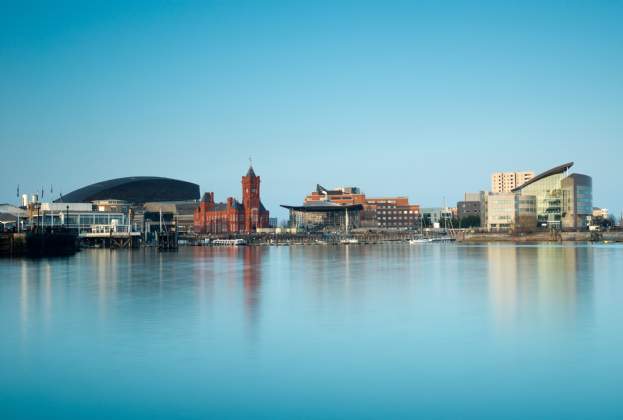Cardiff is a rapidly growing city. In the early 1800s it was only the 25th largest town in Wales. The construction of city docks in the 1830s and the linking with the Taff Vale Railway paved the path for rapid industrialisation, expansion, and booming prosperity that continues to this day.
The Welsh capital has witnessed a great deal of expansion over the past 15 years with economic growth outstripping the UK national average
ATTRACTIVE AFFORDABILITY
Fast-forwarding to the modern era, 15 years ago Savills opened our first office in Cardiff. A lot has changed over in those 15 years. The average home in the city sold for £194,000 back in 2007. This has jumped to £271,000 in 2022 – up 40%, a little behind the GB average of 43% over that time. This slightly slower growth rate has helped maintain Cardiff’s affordability compared to nearby Bristol; there values are 35% higher than in Cardiff, with an average value of £365,000. This gives Cardiff a real competitive advantage in the region when it comes to attracting and retaining residents. Maintaining this affordability will be key to the city’s success.
.png)
A GROWING POPULATION
The city is set to keep growing. The past 15 years saw the population swell by 13%, above the national average of 10%. The next 15 years will see slower growth of only 2%, according to forecasts from Oxford Economics, but this is consistent with a national slowing of population growth and still outpaces the UK average of 1.5%.
This growth is going to be biased towards the higher age bands, however, with a significant rise in the over 65s, who are expected to make up about a third of the population by 2037. The number of students in the city has also been growing rapidly. There were 45,000 in 2021, up 14% compared to 2007. Catering for these different demographic groups must be a priority for the city.
WHAT ARE THE KEY INDUSTRIES?
Economic growth has also continued at pace in the city with economic growth of 23% in the last 15 years. When compared to comparable cities, that’s second place only to Manchester, and just above Bristol. Longer term, its growth is expected to continue, but more in line with peer cities.
The key economic sectors in the city are insurance & finance, human health & social work, and real estate. Combined, these sectors make up 35% of Cardiff’s GVA. These traditional sectors have seen declining output over the past 15 years, however. Instead, IT & Communications has been rapidly expanding and taking their place, growing 427% over that period, and now contributing 6% of the city’s GVA.
THE OFFICE OUTLOOK
The key occupiers of Grade A office space are still those in the insurance & finance sector. A key tenant is Legal & General, who acquired 121,000 sq ft at the Interchange Building at Central Square in Q4 2020.
There have been many newly completed office developments over the last 15 years that have served to alter the dynamic of the Cardiff office market. These include significant developments at Central Square and Capital Quarter, which over the last 5 years has delivered over 900,000 sq ft of Grade A office space in the city centre.
THE RIGHT HOMES IN THE RIGHT PLACE
Further population growth will fuel demand for new housing. However, the pattern of development will continue to change. 15 years ago the bulk of new homes were delivered in large urban regeneration schemes in the city centre and around the bay. More recently, most new build homes are typically delivered much further out from the city centre, requiring much more time on public transport to access the city centre. This results in more workers commuting for longer – which has knock on effects on both worker wellbeing and the levels of CO2 emissions in the city.
The rate of house building has fluctuated around the 800 new homes per year mark since 2018. This is almost half the number of homes delivered 15 years ago in 2007. It’s a rate of house building lower than similar peer cities, at about 0.5% of stock, compared to Bristol which is delivering homes at a rate of 0.8% of stock in 2021, or Manchester at 1.7%. If Cardiff doesn’t build more homes, it risks becoming less affordable and losing out on economic growth as employees and businesses set their sights elsewhere.
.png)
.png)
